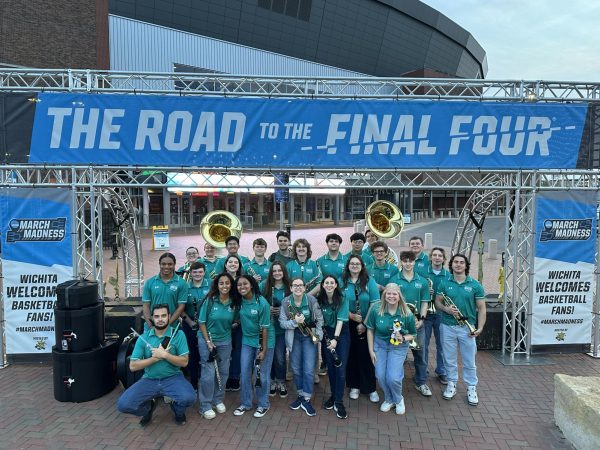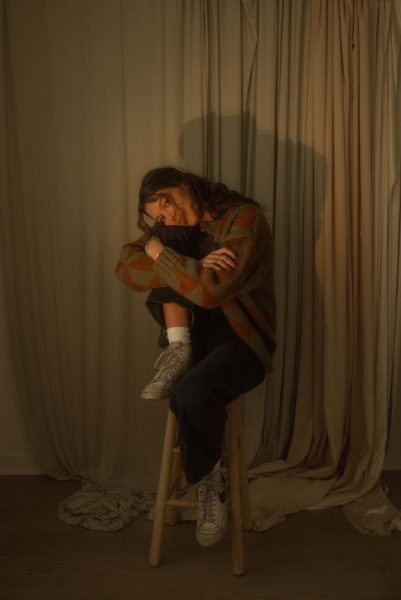The Katrina Collection: a look at the power of resilience after the greatest storm of the century
One hundred and fifty mph winds and storm surges 35 feet tall, $108 billion in damage and 1,833 confirmed fatalities—Aug. 29, 2005, Hurricane Katrina made these numbers more than figures in a tropical cyclone report. They became the catalysts for change in millions of lives.
Due to the hurricane’s immense impact, UNCW’s Synergy reading program has made hurricane Katrina the topic of a number of art exhibits, freshman seminars, group discussions and guest speakers open to all UNCW students and faculty throughout the 2011-2012 school year.
This month, the Warwick center will be featuring works from Mississippi Gulf Coast artist Lori K. Gordon. The center will host an exhibition of her work, “The Katrina Collection,” from Oct. 18 through Oct. 24.
Prior to Gordon’s work in the aftermath of hurricane Katrina, the artist was nationally renowned for her biographical art quilt on display in the Smithsonian Institute’s permanent collection.
Gordon’s quilt honors her friend Celestine, who according to Gordon “was an incredible individual.”
While Celestine Labat was on her deathbed, Gordon promised to find a public place where Celestine’s story could be told.
“She would be very happy to know that the place I found was our nation’s museum,” said Gordon. “Celestine’s story was not just a southern story.”
“The Katrina Collection” follows a similar pattern—its audience goes far beyond the devastated Mississippi Gulf Coast region. It even goes beyond the scope of the United States, as art collectors as far away as Europe and Singapore purchase works from the collection.
Despite this remarkable international audience, Gordon’s work is still very much a direct result of her own experience with the devastation of Hurricane Katrina. As a resident of Clermont Harbor, Miss., Gordon witnessed the awful power of the tropical storm first hand.
“Shocked, I guess, is the best word,” said Gordon. “Not a wall was left standing in our entire community, it was just completely gone.”
While Gordon and her husband sought refuge an hour away from their coastal town, everything on their property was destroyed.
“(There) was no sign of the house, and we still have not found a piece of a wall or the roof,” said Gordon. “We have found pieces of furniture up to five blocks away.”
Along with their home, Gordon’s studio and supplies were also gone.
“In the aftermath of the storm which ripped our lives apart, I swept the slab where my home used to stand. I picked among the rubble of splintered wood and rusted metal where my studio rested amidst a beautiful grove of bamboo…and I waited,” wrote Gordon in an article for Art Gulf Coast in late 2005.
It was five weeks before Gordon began creating art again.
“She went back to work using the only supplies available to her,” said family friend John Miller in his documentary, “Lori K. Gordon.”
Gordon sifted through piles of rubble and debris to find anything that may serve as a piece for her new collection of mixed media assemblages. Everything left behind or washed away had the potential to become something new.
“I have found treasures in the form of clocks which stopped at the moment that destruction rained down upon Clermont Harbor. Broken dolls which washed up on my lot have been transformed into visual stories of shattered lives,” said Gordon.
“People look at the pieces and they think of the lives of the people that all of these pieces represent—people known, people unknown, the pieces are made up of people’s lives. That’s a powerful element of the collection.”
As Gordon worked on the collection, the benefits were twofold: she felt a renewed sense of well being, and she was able to start rebuilding her life.
“I was born an artist. The five weeks in which Katrina robbed me of that part of myself is a period of time in which I was not complete. (But) as each element of a piece has found its perfect place with another, I feel something akin to hope,” said Gordon.
The artist also explained that in spite of the amount of refuge she found in creating “The Katrina Collection,” she felt no need to hold onto the pieces. The most important thing on her mind was creating and selling her work in order to save money for a new home.
This desire to sell is one of a few reasons behind the seemingly religious theme of her “Katrina” works.
“So many of the people who purchased work from me had been here with church groups, working to help us rebuild, and they wanted pieces that reflected their commitment,” said Gordon.
Gordon’s lifelong interest in religion is another reason behind this theme.
When UNCW students walk through “The Katrina Collection,” Gordon hopes it will bring them perspective.
“No matter how bad things may be in your life at any given time, there is always a way to make things better. Resilience is such an important part of survival in the world. We all need to understand that there is only one thing to do when your life falls apart. You pick up the pieces, and create something new that can bring joy and beauty back into your life,” said Gordon.
Since Katrina, the sales from her collection have helped Gordon and her husband build a new home an hour north of Clermont Harbor. She continues to work on pieces for “The Katrina Collection,” as well as a continuation of Celestine Labat’s quilt with “The Labat Project.”
To learn more about Lori K. Gordon and her work, visit: lorikgordon.blogspot.com.
To learn more about “The Katrina Collection” and other Synergy events at UNCW, visit: http://uncw.edu/commonreading/events.htm.








